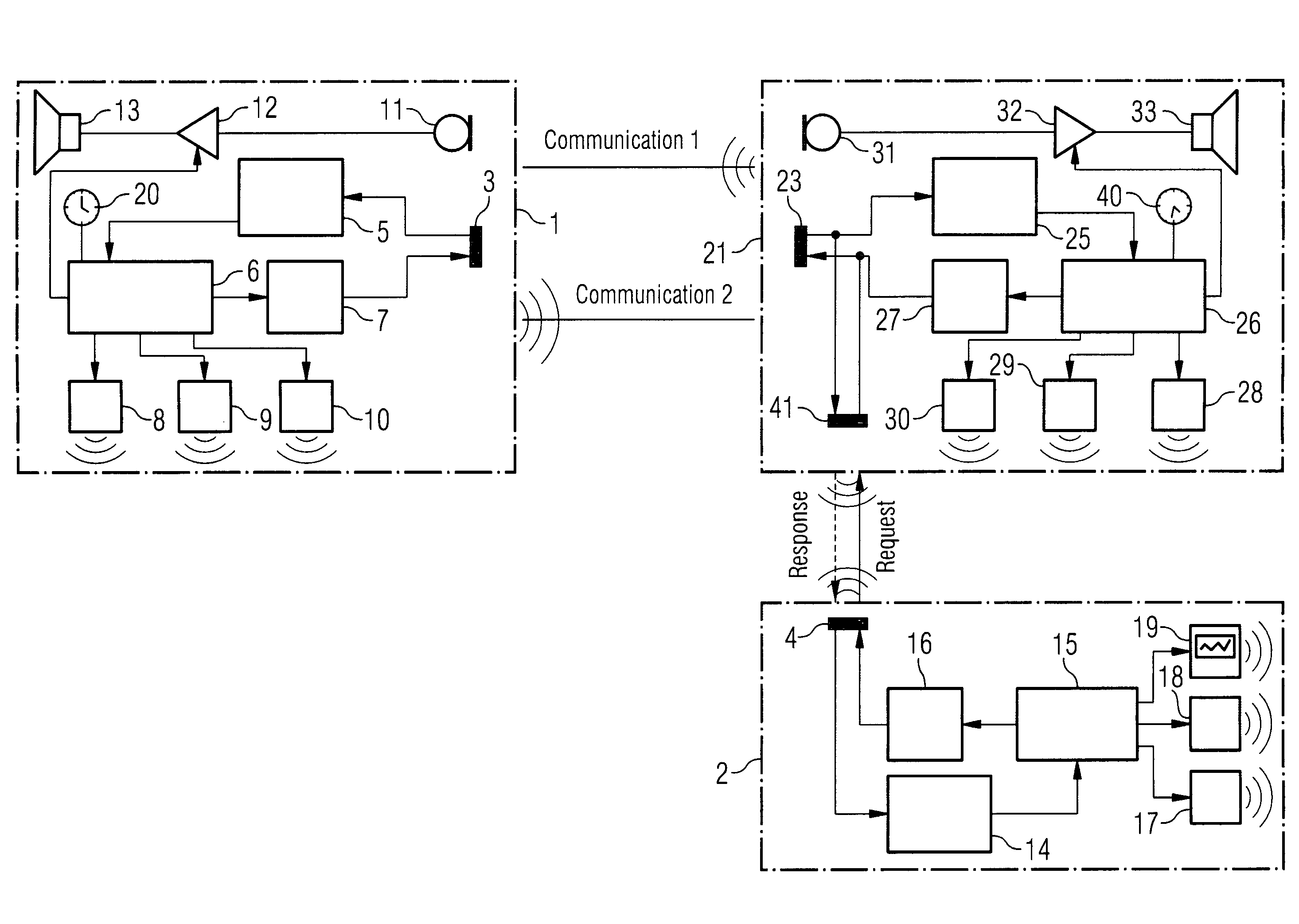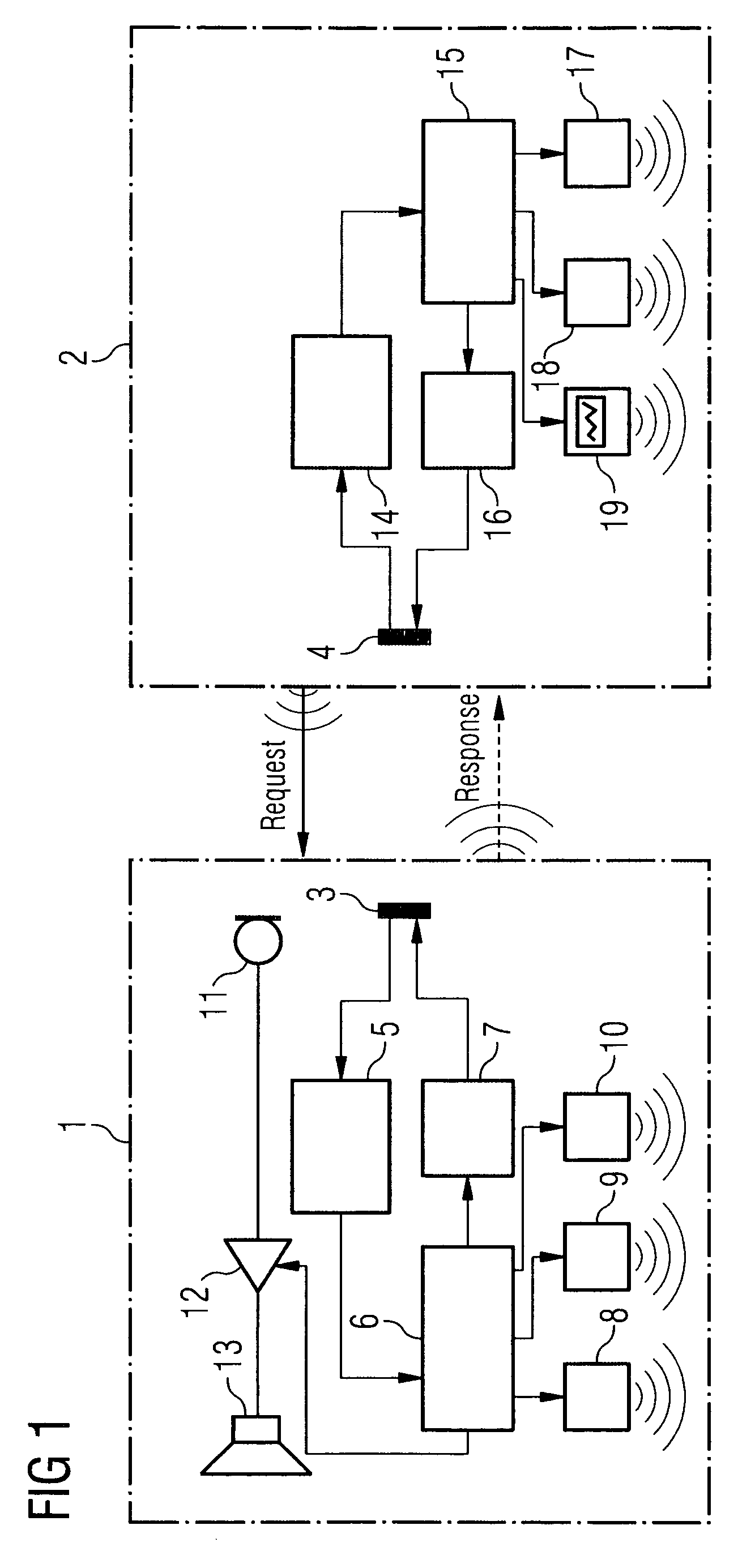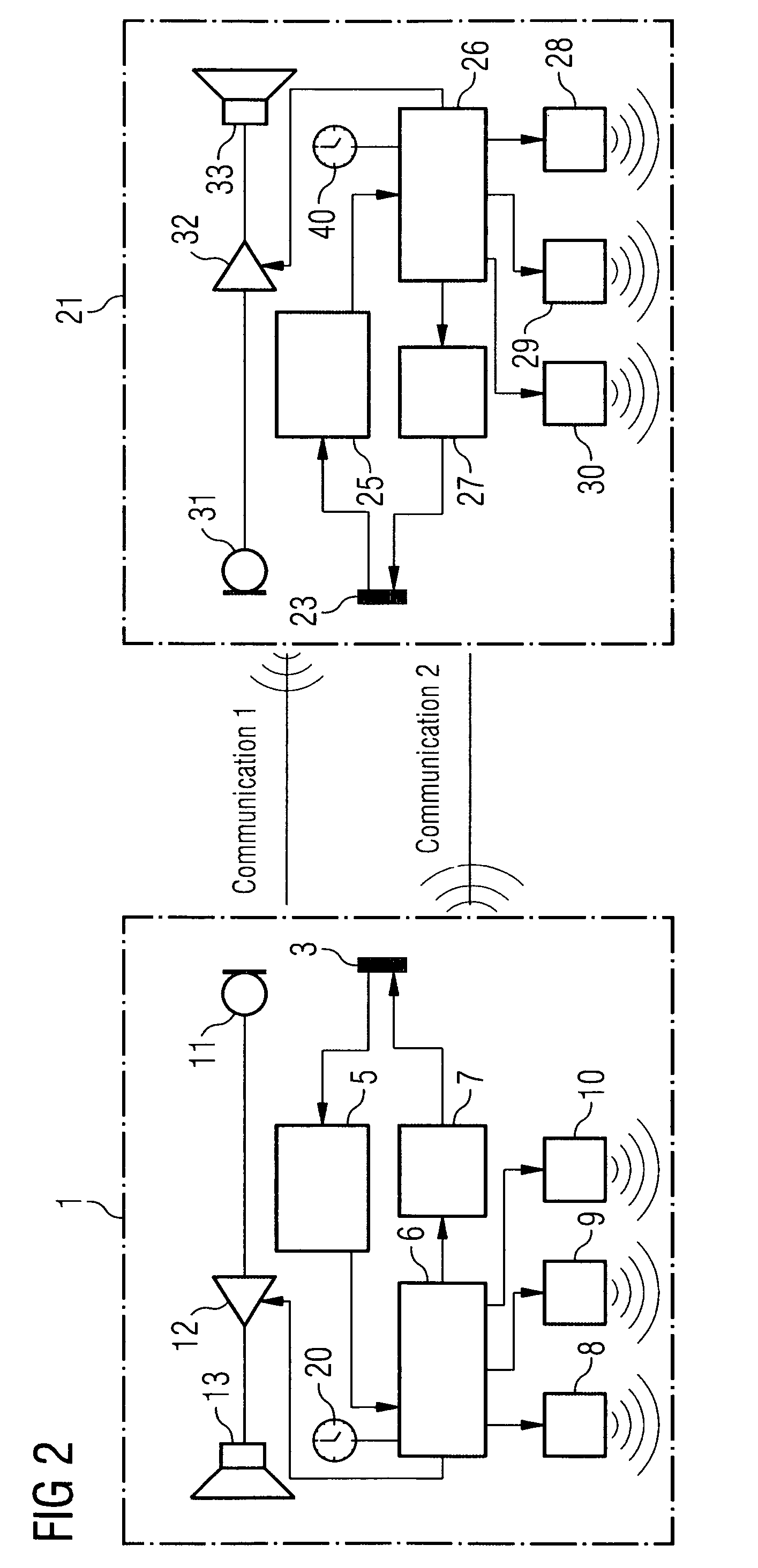Multi-component hearing aid system and a method for its operation
a hearing aid system and multi-component technology, applied in the field of multi-component hearing aid systems, can solve the problems of limited maximum transmit power of such hearing aid system components that are to be worn close to the ear, limited miniaturization, and interference power of said components, so as to reduce interference power
- Summary
- Abstract
- Description
- Claims
- Application Information
AI Technical Summary
Benefits of technology
Problems solved by technology
Method used
Image
Examples
Embodiment Construction
[0026]FIG. 1 shows a schematic circuit diagram of a hearing aid system according to the invention, consisting of two components. The two components of the hearing aid system are a hearing aid component 1 designed to be worn on the ear of a patient for the purpose of amplifying sound pressure and an auxiliary device 2 by means of which individual acoustic parameters of the hearing aid component to be worn on the ear can be set, as can be carried out by the patient him- / herself with the aid of a remote control for example. In an alternative that is not shown, the auxiliary device can also be a programming device of a hearing aid acoustician.
[0027]In order to carry out the settings, a communication is required for the purpose of data transmission between the hearing aid component 1 and the auxiliary device 2. During the data transmission the auxiliary device 2 is brought close to the ear-worn hearing aid component 1 so that it is situated within range of the data transmission means dis...
PUM
 Login to View More
Login to View More Abstract
Description
Claims
Application Information
 Login to View More
Login to View More - R&D
- Intellectual Property
- Life Sciences
- Materials
- Tech Scout
- Unparalleled Data Quality
- Higher Quality Content
- 60% Fewer Hallucinations
Browse by: Latest US Patents, China's latest patents, Technical Efficacy Thesaurus, Application Domain, Technology Topic, Popular Technical Reports.
© 2025 PatSnap. All rights reserved.Legal|Privacy policy|Modern Slavery Act Transparency Statement|Sitemap|About US| Contact US: help@patsnap.com



